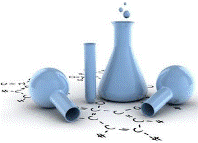Chemical and Biomolecular Engineering, Department of

Department of Chemical and Biomolecular Engineering: Faculty Publications
Date of this Version
2010
Document Type
Article
Citation
Microsc Res Tech. 2010 September ; 73(9): 910–917.
Abstract
The ability to genetically modify mesenchymal stem cells (MSCs) seeded inside synthetic hydrogel scaffolds would offer an alternative approach to guide MSC differentiation. In this report, we explored gene transfer to MSCs seeded on top, or inside matrix metalloproteinase (MMP) degradable hydrogels that were loaded with DNA/poly(ethylene imine) (PEI) polyplexes. DNA/PEI polyplexes were encapsulated inside poly(ethylene glycol) (PEG) hydrogels crosslinked with MMP degradable peptides via Michael Addition chemistry. Gene transfer was visualized and quantified through using a vector encoding for green fluorescent protein and luciferase. We found that gene transfer to MSCs was possible for cells seeded both in two and three dimensions. The amount of luciferase expression was similar for cells seeded in two and three dimensions even though the number of cells in three dimensions is significantly higher, indicating that gene transfer to cells seeded in two dimensions is more efficient than for cells seeded in three dimensions. The use of hydrogel scaffolds that allow cellular infiltration to deliver DNA may result in long lasting signals in vivo, which are essential for the regeneration of functional tissues.


Comments
Copyright 2010 John Wiley & Sons. Used by permission.